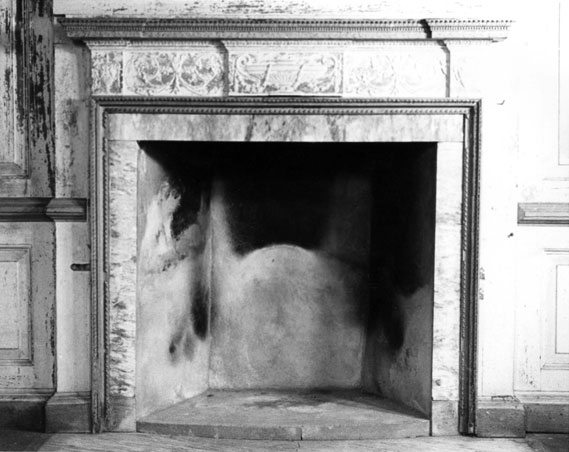|
From: Tim Chesser To: "'buckley@rumford.com'" Subject: rumford firebox Date: Wed, 31 Jul 2002 Hi Mr. Buckley, My name is Tim Chesser, interpretations manager at Drayton Hall in Charleston, SC (draytonhall.org). One of our employees has gotten involved in a blood feud with one of our other employees as to whether or not our fireplaces are according to Count Rumford's designs. I am hoping that you can settle this dispute for us. I have attached a photo from one of three modified fireboxes in the house. Video of these rooms is available on our website if you want another view. We know from written records that the boxes were installed in 1803 by Dr. Charles Drayton and that one of the slaves did the work, but we don't have any other information. I'd be grateful of your opinion. Thanks. Tim
|
Drayton Hall Charleston, NC |
|
Tim, "Blood feud" eh? I'd hate to be the cause of pain and suffering. The fireplaces at Drayton Hall certainly look like Rumfords and the date is right. Rumford's essays, published in 1796 and 1798, were widely read in this country after Jefferson build Rumfords at Monticello and the James Mease Domestic Encyclopidia, 1802-5 (five vol) included about 30 pages right out of Rumford's first Essay. I would say with some certainty that the fireplaces were "Rumford influenced". Now let's get picky. Even Jefferson couldn't resist making the fireplaces at Monticello a little deeper and he apparently didn't understand the importance of "rounding the breast" or streamlining the throat. This was well before airplanes, carburetors, and streamlined cars, of course, and hardly anyone understood fluid dynamics. Even Rumford's own masons would "neglect to round the breast" if they thought that Rumford might not check. Many early Rumfords were not exactly as Rumford would have specified. Some were deeper, wider in the back and without the streamlined throat. Even if the fireplaces at Drayton Hall were built with rounded breasts though, it might be hard to tell if the plaster parging has fallen off and/or been repaired. |
Let me refer you to Rumford's essays which I have put on line beginning at http://www.rumford.com/chimneyfireplacesa.html Look especially at the plates on page http://www.rumford.com/chimneyfireplacesp.html It would be interesting to look closely at the throat to see what the shape is and if there are any clues to indicate what the shape might have been in 1803. Fireplaces from this era required a lot of maintenance and, if they were used, they might have been repaired annually and rebuilt every five or ten years. I don't know the history of Drayton Hall but, unless the fireplaces were covered over soon after 1803, it's almost certain that what you see is not exactly what was built in 1803. Despite careful scholarship and restoration, the fireplaces at Monticello don't look very much like the drawings Jefferson made of them in 1797. Hopefully I've been vague enough that both of your employees can claim victory. Let me know what you find.
Best, |

Buckley Rumford Fireplaces
Copyright 1996 - 2002 Jim Buckley
All rights reserved.
webmaster
